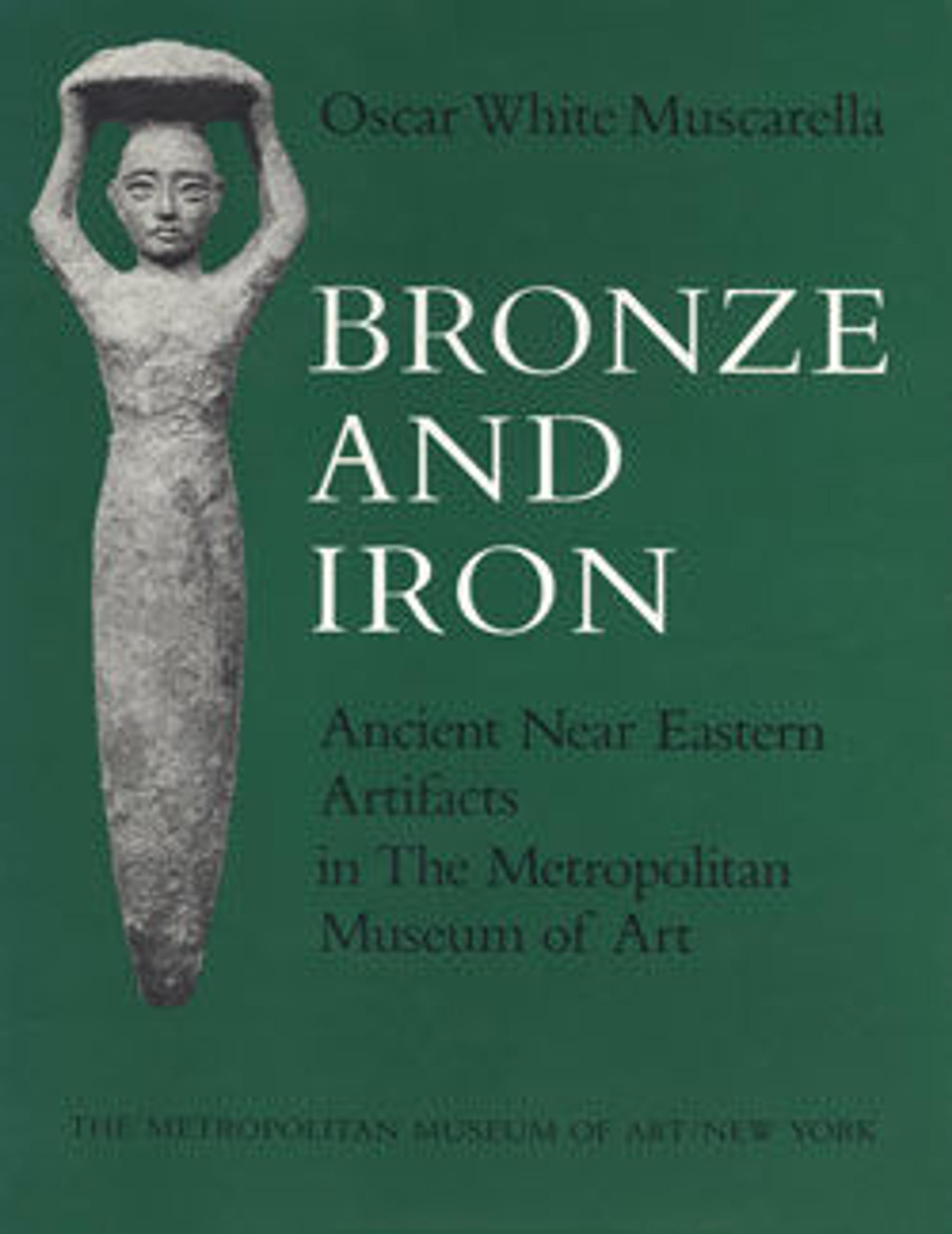Head of pin
This is the head of a bronze pin in the form of a demon or supernatural creature, surmounted by a recumbent animal. The demon’s head is framed by two thick lines that meet and form its nose; its eyes are raised pellets. Two loops extend from the top of its head; these probably represent hair curls or horns. A recumbent animal sits on the demon’s head, with its folded legs disappearing behind it. It is impossible to say what kind of animal it is, as both its head and tail are now missing, and its form is stylized.
This pinhead was excavated at Surkh Dum, a settlement site in Luristan in the Zagros Mountains of western Iran. It was found in a structure interpreted as a sanctuary and was thus probably an offering to a god. Pins were probably used to fasten clothing and as objects of adornment in their own right.
This pinhead was excavated at Surkh Dum, a settlement site in Luristan in the Zagros Mountains of western Iran. It was found in a structure interpreted as a sanctuary and was thus probably an offering to a god. Pins were probably used to fasten clothing and as objects of adornment in their own right.
Artwork Details
- Title: Head of pin
- Period: Iron Age III
- Date: ca. 8th–7th century BCE
- Geography: Iran, Luristan, Surkh Dum
- Culture: Iran
- Medium: Bronze
- Dimensions: 1.38 x 1.89 in. (3.51 x 4.8 cm)
- Credit Line: Rogers Fund, 1943
- Object Number: 43.102.3
- Curatorial Department: Ancient West Asian Art
More Artwork
Research Resources
The Met provides unparalleled resources for research and welcomes an international community of students and scholars. The Met's Open Access API is where creators and researchers can connect to the The Met collection. Open Access data and public domain images are available for unrestricted commercial and noncommercial use without permission or fee.
To request images under copyright and other restrictions, please use this Image Request form.
Feedback
We continue to research and examine historical and cultural context for objects in The Met collection. If you have comments or questions about this object record, please complete and submit this form. The Museum looks forward to receiving your comments.
